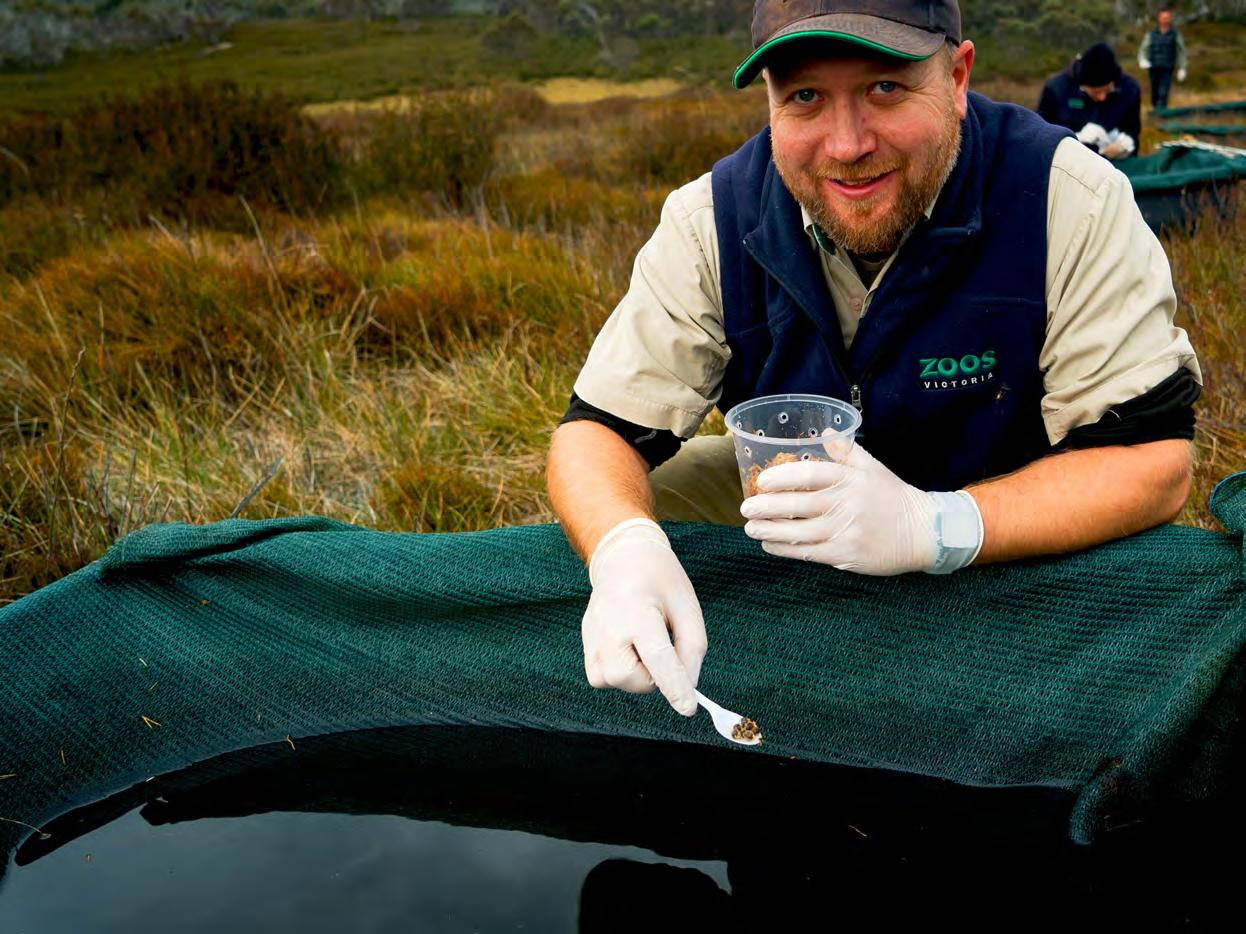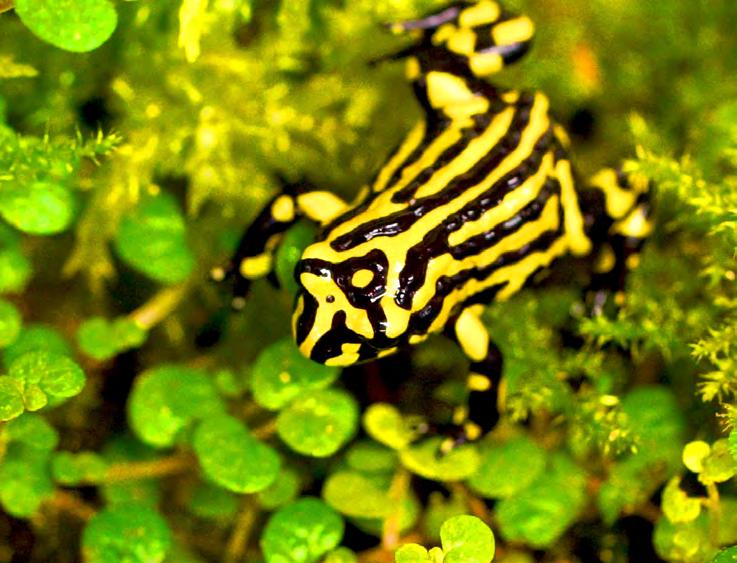
3 minute read
Get by with a little help
Zoos Victoria’s mission to protect vulnerable species from extinction would not be possible without the help of our members and partners.
WORDS Krysia Bonkowski
Aside from the most dedicated twitchers, it’s likely few people would know an Eastern Bristlebird if they saw one. As is the case with some of the world’s most iconic animals, the survival of this shy, grounddwelling brown bird found in pockets of south-eastern Australia depends on us. Every day, more species move closer to extinction. Too many of them face the prospect of slipping over the brink unnoticed.
As a world leading zoo-based conservation organisation, Zoos Victoria (ZV) is involved in conservation programs across six countries, eight community campaigns and more than 50 research projects, and leads recovery efforts for 27 threatened native species under its long-term Fighting Extinction strategy. The support of partner organisations is integral to this vital work.
Collaboration is essential for finding long-term solutions with community support. Along with institutions such as Deakin University and citizen scientists, ZV is working to restore the Bogong Moth

migration that the Mountain Pygmy-possum relies on for survival. With partners including Taronga Conservation Society Australia and former NSW Office of Environment and Heritage (now NSW Department of Planning, Industry and Environment), thousands of Southern Corroboree Frog eggs and adults have been released into the wild. Cooperation means the team can react to urgent threats, such as evacuating a population of Eastern Bristlebirds as the bushfires bore down in February, alongside partners including Parks Victoria and Monash University. By teaming up with likeminded organisations, Zoos Victoria hopes to be able to continue to stem the tide of extinction long into the future.
THE EASTERN BRISTLEBIRD
When this year’s devastating bushfires threatened one of the only remaining Victorian populations of Eastern Bristlebirds near Mallacoota in Gippsland, a veritable army mobilised to save them. Zoos Victoria teamed up with experts from the Department of Environment, Land, Water and Planning, Parks Victoria, Currumbin Wildlife Sanctuary, Monash University and University of Wollongong to save an ‘insurance population’ of the nearflightless bird. With support from the Orbost Incident Management Team, the group was whisked into Croajingolong National Park by the Australian Defence Force on a Chinook helicopter, aiming to collect 20 birds over five days. They nearly filled their quota despite being evacuated after two days, with Victorian Fisheries Authority providing a boat out and Emergency Management Victoria providing aircraft back to Melbourne. “I don’t know how we pulled it all together in such a short amount of time with all those people,” says Zoos Victoria’s Senior Threatened Species Biologist Dr Katherine Selwood. “The operation itself was really amazing.” The birds were returned to their home in the bush from Melbourne Zoo in April, blissfully unaware of the operation mounted to save them.
CARING FOR THE CORROBOREE FROG
For nearly two decades, Zoos Victoria has endeavoured to save the Southern and Northern Corroboree Frogs, brought to the brink of extinction by drought and the fatal chytrid fungus disease. The effort has hinged on breeding programs established by Zoos Victoria, Taronga Conservation Society Australia and the Amphibian Research Centre, made possible by the field research of Dr David Hunter from the former NSW Office of Environment and Heritage. Once a breeding population was established, focus turned to returning frogs to the wild. “One of our key goals with the recovery programs is not to have animals in zoos forever,” says Zoos Victoria Threatened Species Biologist, Deon Gilbert. “We really want them to be back in the wild and be a natural self-sustaining population.”
With further research from University of Wollongong and on-ground support from NSW National Parks and Wildlife Service, the program now releases 2,000-plus Southern Corroboree Frog eggs annually into wild populations and has established disease-free ‘exclosures’ of captive-bred adults in Kosciuszko National Park. “Even globally, it’s one of the best examples of collaboration across state boundaries and between multiple institutions,” says Deon.

Southern Corroboree Frog eggs into both natural sphagnum bogs and chytrid-free protected pools on Mount Kosciuszko.
Credit: Zoos Victoria
HOP ALONG
Come and see the Southern Corroboree Frog at Healesville Sanctuary and Melbourne Zoo to see how your membership is saving these species. Visit zoo.org.au to book your free member tickets.







